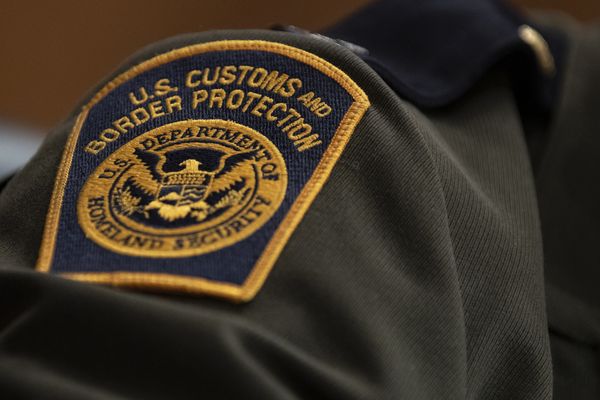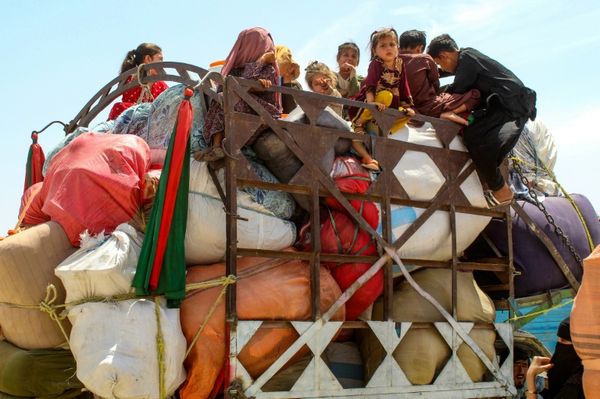Wildlife authorities in Tasmania have decided to euthanise the surviving false killer whales that stranded on a remote beach on the state’s northwest coast after rough ocean conditions made it impossible to refloat them.
More than 150 false killer whales were found stranded on a remote beach near Arthur River on Wednesday and wildlife officials confirmed on Wednesday that 90 of the 157 animals were still alive.
Brendon Clark, a liaison officer at the Tasmania Parks and Wildlife Service told reporters on Thursday that euthanasia was the only option. “The conditions that the team faced yesterday in attempts to refloat the whales proved very challenging and, in fact, dangerous to our staff.”
He added that the “forecasts over the forthcoming days show no likelihood of improvement in weather conditions, and so those challenging conditions trying to refloat animals into that exposed ocean will remain constant”.
Despite its name, the false killer whale is a highly sociable species of dolphin. These animals, which can grow up to 6m long, live in large pods, making them more susceptible to mass strandings.
On Wednesday afternoon, the team began euthanising animals, processing 27 on-site this morning, Mr Clark said. As of now, 38 animals remain alive, indicating that 25 more succumbed naturally overnight.
The euthanasia process is expected to conclude on Thursday, after which the authorities will assess “options for carcass disposal”.
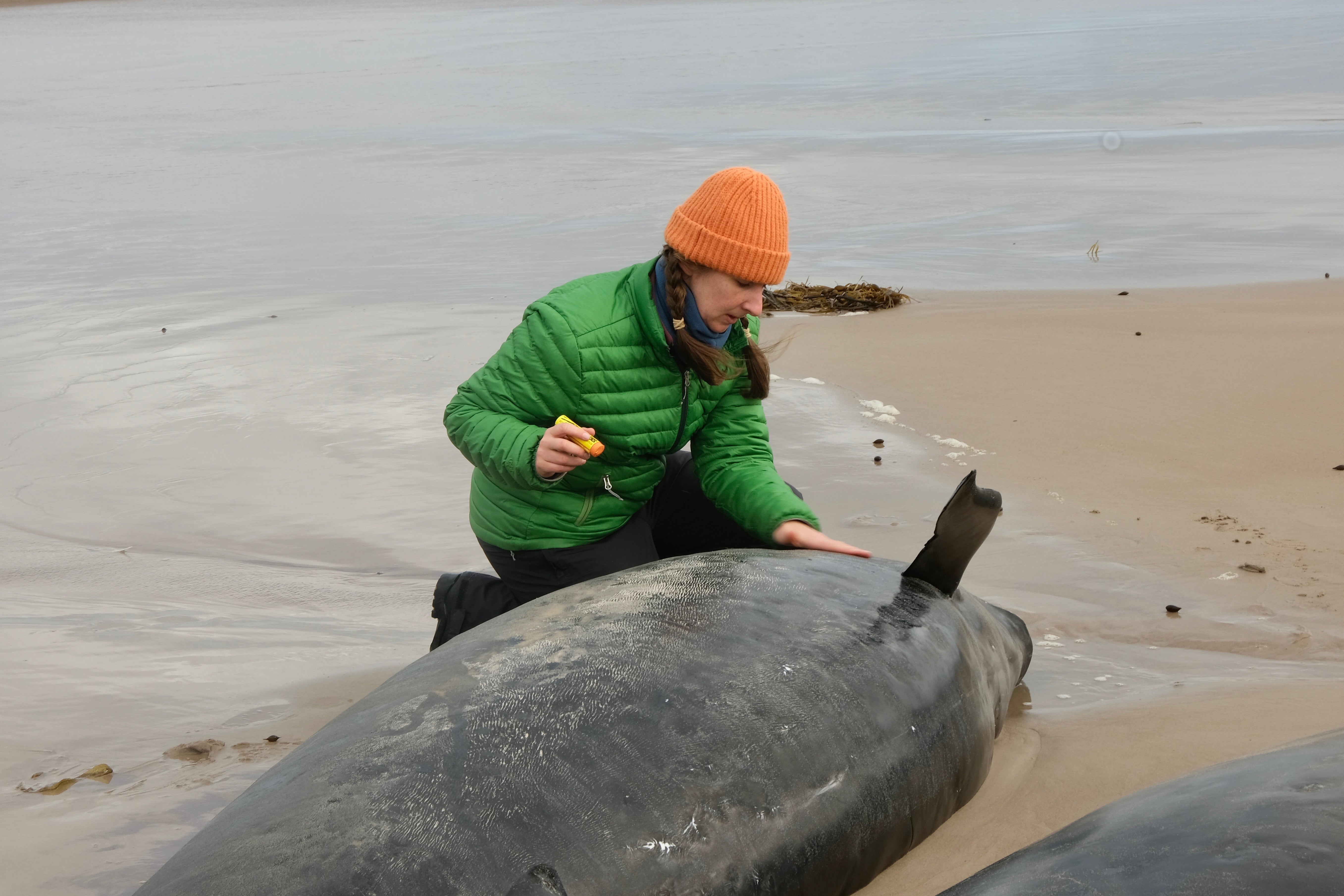
Authorities decided to euthanise the stranded whales to prevent their further suffering, as they had become disoriented and distressed. While machinery is often used to relocate stranded whales for release, the remote location of the beach made it impossible to deploy equipment.
Marine biologist Kris Carlyon told the media that the site, located about 300km from Launceston, is highly inaccessible, making it difficult to transport rescue equipment. “This is possibly the trickiest location I have seen in 16 years of doing this role in Tasmania.”
He added: “We’re talking a very rough, steep, single lane road into the site. We can get four-wheel drives in there, but not a lot else.”
Shelley Graham, incident controller with Tasmania Parks and Wildlife Service said: “It’s quite rough, and the animals just can’t get past the break to get out. They just keep turning around and coming back towards the beach.”
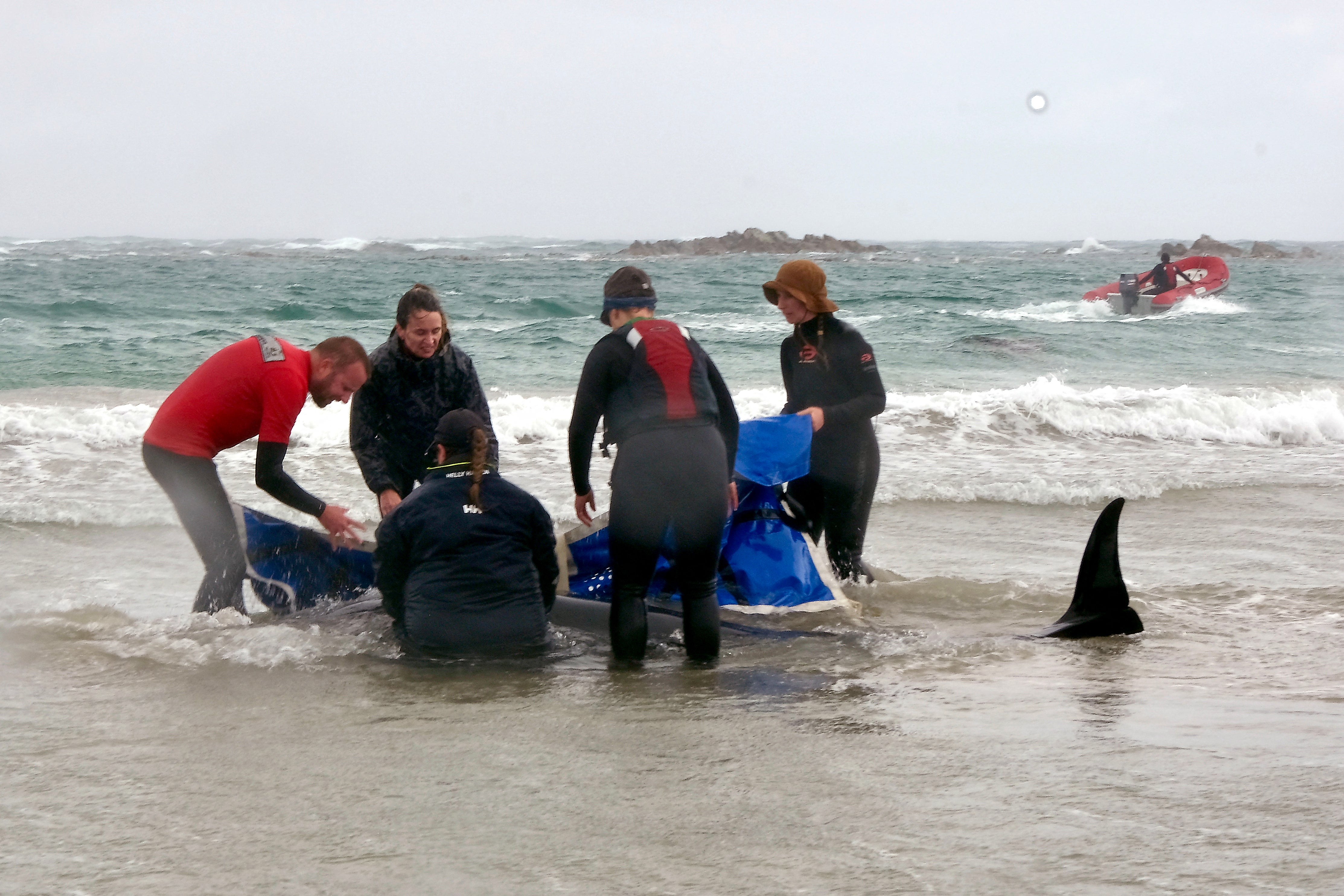
Aerial images revealed false killer whales scattered along the beach, some partially buried in sand, while others remained stranded in shallow waters near rocky outcrops.
The last mass stranding of false killer whales in Tasmania occurred 50 years ago, in June 1974, when a pod of 160 to 170 was found at Black River Beach on the island’s northern coast. It remains unclear how many survived.
Around 470 pilot whales stranded at Macquarie Harbour near Strahan in Tasmania’s west coast in 2020, followed by another 200 in the same area in 2022.
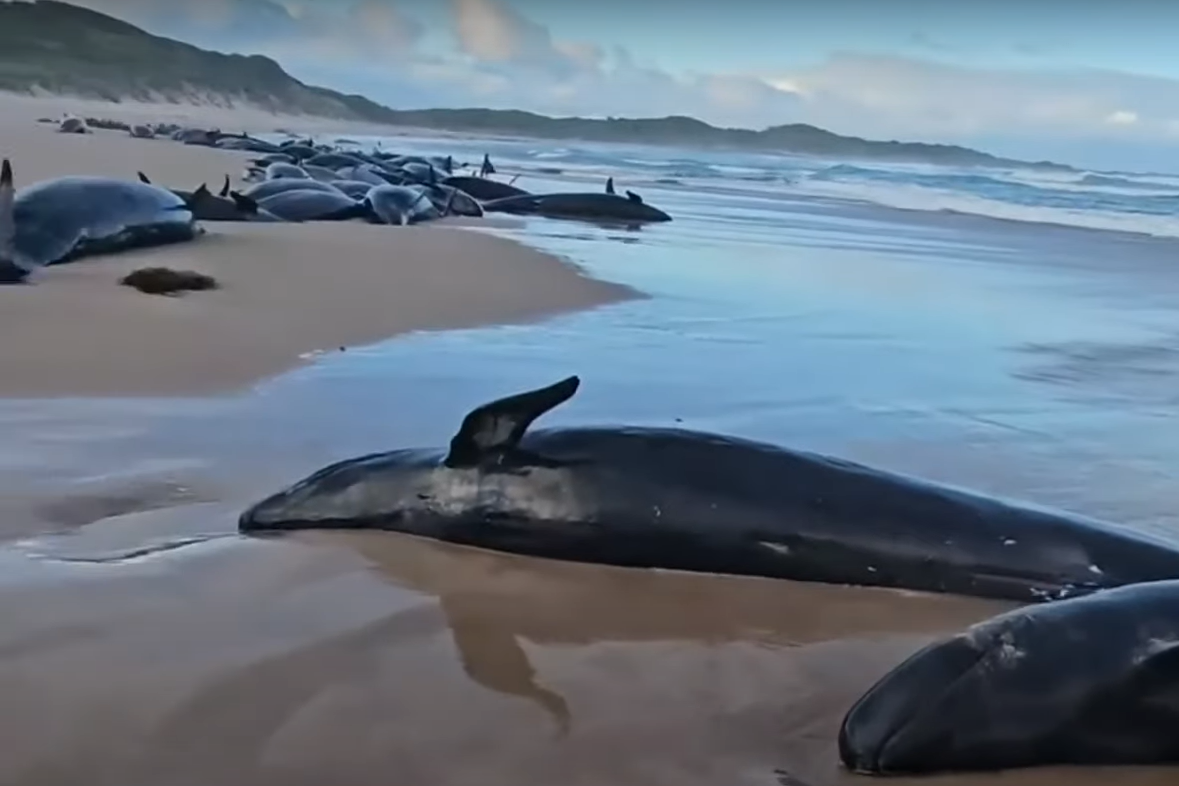
Dr Angus Henderson at the Institute of Marine and Antarctic Studies, University of Tasmania, told CNN: “It’s not often clear why whales strand, but they have been stranding for many centuries across the world’s coastlines, including en mass.
“There are many natural causes such as lead animals getting sick, lost or disoriented, as well as other factors such as weather and magnetic anomalies… This is the third mass stranding in 5 years on the west coast of Tasmania, but whether this is a pattern with a discernible cause is yet to be determined.”
Meanwhile, Mr Clark added that, as part of standard procedure, postmortem investigations, “including full necropsies” would be conducted on several animals “to help try to gain additional information as to why these types of events may be occurring”.


